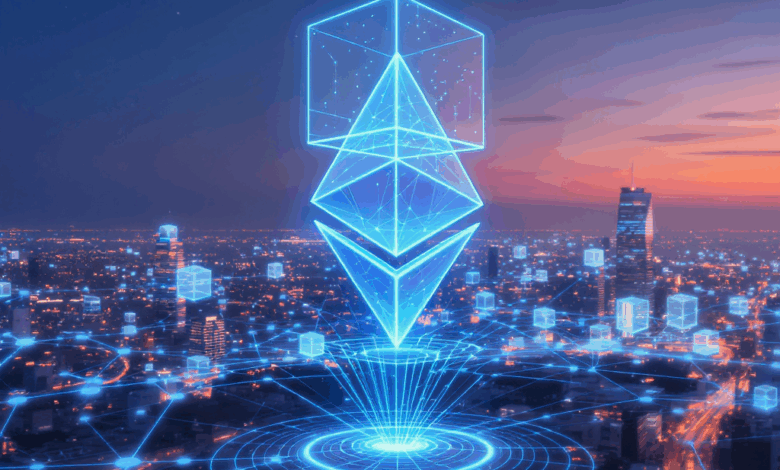Unlocking ETH Layer 2 Solutions – How to Scale Ethereum Transactions with Confidence

Have you ever felt the frustration of waiting endlessly for an Ethereum transaction to confirm, only to be hit later with unexpectedly high gas fees? I remember a moment not long ago when sending what I thought was a small payment turned into a costly, slow ordeal — a stark reminder of Ethereum’s scalability challenges.
This experience got me thinking: “Is there a way to keep Ethereum’s security while making transactions faster and cheaper?” It turns out, Layer 2 solutions are stepping up as the answer, but diving into them can feel like navigating a labyrinth — with terms like Optimistic Rollups, zk-Rollups, Plasma, and more thrown around.
The puzzle gets even more intriguing when you consider the recent surge in adoption. In 2023, Layer 2 protocols locked over $13 billion in value, signaling a significant shift toward these scaling methods. And then there’s Ethereum R1, introduced in 2025, which promises a decentralized and token-less approach, shaking up the existing Layer 2 landscape.
So, where does that leave us — enthusiasts and professionals eager to make Ethereum more scalable without sacrificing security? This guide aims to unfold that journey step by step. We’ll explore the nuts and bolts of key Layer 2 technologies, weigh their pros and cons, and look at real-world applications where businesses have slashed transaction costs by 90% thanks to these innovations.
But more than just facts and figures, this is an invitation to think alongside — to question how these developments might reshape not only how we use Ethereum but also how decentralized networks evolve in the future.
Are you ready to unlock Ethereum’s Layer 2 potential with clarity and confidence? Let’s embark on this exploration together, turning complexity into practical understanding and opening doors to efficient blockchain interactions like never before.
Unlocking Ethereum’s Layer 2 Solutions Navigating the Maze of Scalability
I keep thinking back to that one transaction I made late last year — a simple transfer that turned into an unexpected lesson in patience and cost. The Ethereum network, while revolutionary, can sometimes feel like a traffic jam during rush hour: slow and expensive. But then came Layer 2 solutions, promising a kind of express lane. Yet, just like any maze, the path through L2 technologies isn’t straightforward. What if we could chart this territory together?
Why Layer 2 Matters: The Backdrop to Our Journey
Ethereum’s promise has always been decentralization paired with security. However, as more users flocked to the network, congestion and soaring gas fees became hurdles. Recent data reveals a remarkable shift — in 2023 alone, over $13 billion was locked in various Layer 2 protocols, a clear signal that the community is seeking alternatives to mainnet transactions. This surge isn’t just about saving money; it’s about making Ethereum usable for everyday applications.
Yet, these scaling strategies come in different flavors. From Optimistic Rollups to zk-Rollups, Plasma, and the newcomer Ethereum R1, each offers distinct trade-offs. Understanding these will help us decide which roads to take.
Peeling Back the Layers: Key Ethereum Layer 2 Technologies
Optimistic Rollups operate like a trusted courier system — transactions happen off-chain, bundled, and then sent as a proof back to Ethereum. It’s efficient but relies on a challenge period to verify honesty. Projects like Optimism and Arbitrum have found favor among many DeFi platforms, offering a balance between speed and security.
On the other hand, Zero-Knowledge Rollups (zk-Rollups) bring cryptographic magic to the table. They verify transactions instantly through proofs without revealing details, enhancing privacy alongside scalability. Innovations by zkSync and StarkWare illustrate how this tech is not just theoretical but actively shaping the ecosystem.
Then there are State Channels and Plasma chains. Imagine having a private chat room where you and your friends exchange messages quickly, only summarizing the conversation publicly when necessary. State Channels excel at micro-payments and frequent interactions, while Plasma acts like a mini Ethereum chain, offloading some of the workload.
Ethereum R1 A New Dawn in Decentralization?
Introduced in May 2025, Ethereum R1 challenges the status quo by operating without a native token and focusing heavily on decentralization. This approach resonates with those concerned about governance centralization in existing Layer 2s. It’s like building a highway that belongs to everyone, without toll booths controlled by a few.
While the full implications of R1 are unfolding, it represents the ecosystem’s evolution—balancing scalability, security, and decentralization in fresh ways.
Applying Layer 2 Solutions: What Should You Consider?
When diving into Layer 2, it’s tempting to pick the fastest or cheapest option. But it’s worth pausing to ask: What matters most for your use case? Transaction speed? Cost-efficiency? Privacy? Compatibility?
For instance, if privacy is a priority, zk-Rollups might be the way to go. If your application involves frequent off-chain interactions, State Channels could shine. And for those valuing governance neutrality, Ethereum R1 beckons.
Real-World Impact Businesses Cutting Costs by 90%
Here’s a striking example — payment processors integrating Layer 2 solutions have reported slashing transaction costs by up to 90%. Imagine the ripple effect this has on industries reliant on blockchain for payments, supply chains, or digital assets.
But with great innovation comes caution. Ensuring the chosen Layer 2 solution has undergone rigorous security audits and maintains reliability is crucial. The last thing anyone wants is to trade high gas fees for high risk.
Staying Ahead: Tips for Navigating the Layer 2 Landscape
-
Keep Learning: The Layer 2 ecosystem evolves rapidly. Engaging with community forums, following updates from projects, and testing new solutions can keep you informed.
-
Test Before Committing: Many Layer 2 platforms offer testnets or small transaction capabilities. Experimenting helps understand user experience and technical nuances.
-
Evaluate Security Posture: Look for audit reports, bug bounty programs, and community trust signals before deploying significant resources.
-
Think Long-Term: Consider interoperability and how your choice fits within the broader Ethereum roadmap, including Ethereum 2.0 developments.
Our Shared Exploration: What Next?
So here we are, standing at the crossroads of innovation and practicality. Layer 2 solutions are not just technical constructs but gateways to making Ethereum scalable and accessible. Yet, the landscape is dynamic, with new players like Ethereum R1 reshaping the rules.
What do you think—could Layer 2 be the key to mass blockchain adoption, or are there unseen hurdles still ahead? As we continue to explore, perhaps the real question is how we, as a community, shape this evolution together. For now, why not take a step and try a small transaction on a Layer 2 network? Sometimes, the best way to understand is to experience firsthand.
Are you ready to unlock Ethereum’s Layer 2 potential? Let’s keep this conversation going.
References and further reading are embedded naturally throughout this exploration, drawing from recent developments and real-world use cases to illuminate our path.

Reflecting on our journey through Ethereum’s Layer 2 landscape, it’s clear that these solutions offer more than just technical fixes—they represent a transformative step toward a more accessible, efficient blockchain future. We’ve seen how Optimistic and zk-Rollups, Plasma chains, and innovations like Ethereum R1 each carve unique paths to scalability, balancing speed, cost, and decentralization in ways that could redefine how we interact with Ethereum.
But this exploration also reveals a broader truth: scalability is not a one-size-fits-all answer. It’s a nuanced puzzle where your priorities—whether privacy, governance, or transaction frequency—shape the best route forward. And beyond the tech, real-world successes like businesses slashing costs by 90% show the tangible impact when these ideas move from theory to practice.
So, what have we truly gained here? More than knowledge, we’ve gained perspective—a lens to critically evaluate Layer 2 options and a readiness to engage actively with a rapidly evolving ecosystem. This isn’t just about understanding blockchain better; it’s about empowering ourselves to participate in its evolution.
What if the next step is simply to dive in? Try a small transaction on a Layer 2 network, observe the differences firsthand, and let experience guide your confidence. Experimentation, coupled with ongoing learning about security and interoperability, will be our compass as we navigate these shifting terrains.
Looking ahead, Ethereum’s scalability story is still unfolding. With projects like Ethereum R1 pushing decentralization boundaries and Layer 2 adoption surging, the future promises exciting developments but also challenges to question and address together.
So, as we close this chapter, I leave you with this: How will you shape your path amid these innovations? Will you be a passive observer or an active explorer? The door to Layer 2’s potential is open—stepping through it might just change how you see and use blockchain forever.
If this exploration sparked your curiosity, why not take that step now? Engage with Layer 2 solutions, share your experiences, and let’s continue this conversation—together.

